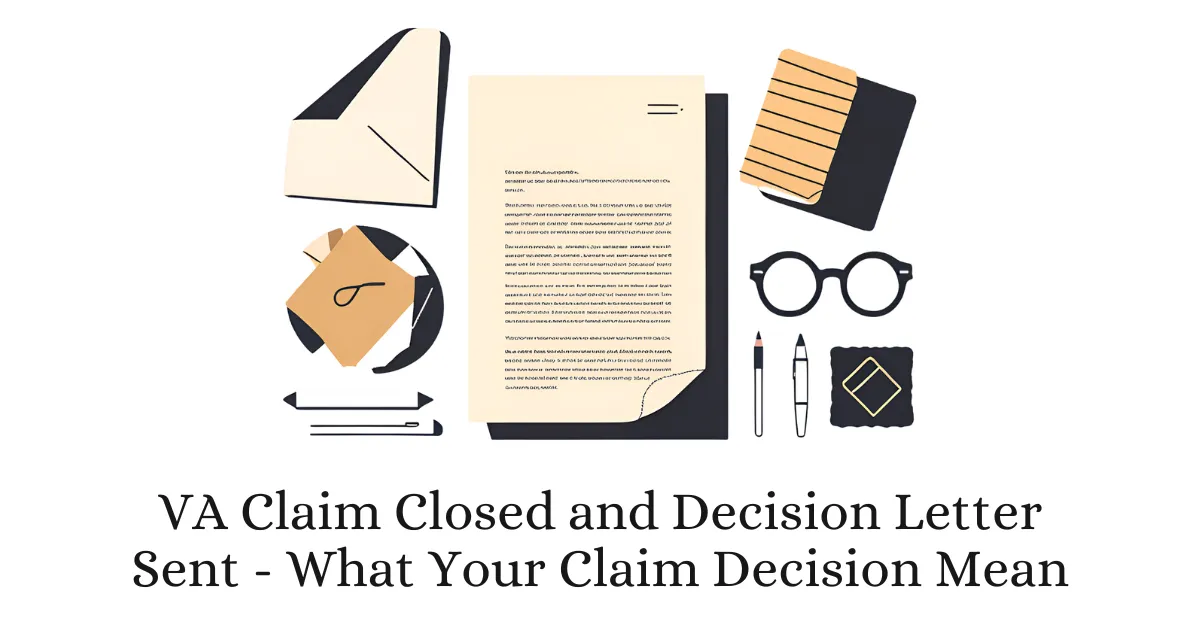When you file a VA disability claim, the final step in the process is receiving a decision letter. This letter will notify you whether your claim has been approved, denied, deferred, rejected, or remanded.
Understanding these decision outcomes is crucial. It can help you determine your next steps, whether to accept the decision, appeal, or provide additional documentation.
This guide breaks down the different types of claim decisions and explains what they mean for you.
Understanding VA Claim Decision Results
Understanding your VA claim decision is essential for moving forward in the process. Here’s a breakdown of what each decision result means and what actions to take next.
Approved
When your VA claim is approved, it means the VA has determined that your condition is service-connected and you qualify for benefits.
This is the most favorable outcome, as it provides you with compensation for your disability. After approval, you’ll receive a decision letter that outlines the effective date of your benefits and the monthly compensation amount.
If you are satisfied with the decision, you can begin receiving your benefits as outlined.
Be sure to keep track of the payment details and follow any instructions provided by the VA regarding how to manage your benefits.
Denied
A denied claim means that the VA has determined that-
- Your condition does not meet the criteria for a service connection or
- Your condition does not meet the severity required for benefits
A denial can happen for several reasons, such as insufficient evidence linking your condition to your military service or failure to meet medical criteria.
If your claim is denied, you have the right to appeal. Start by reviewing the denial letter to understand the reason for the decision. You can then file a Notice of Disagreement (NOD) or submit new evidence to support your case.
Rejected
If your claim is rejected, it generally means that there was an issue with the application, such as-
- Incomplete paperwork
- Missing signatures or
- Other administrative errors
Rejection is not a final decision on your case (actually, no decision is). It is rather a signal that the VA needs additional or corrected information before processing the claim further.
If your claim is rejected, the first step is to correct the issues pointed out in the rejection notice and resubmit the claim.
Ensure that all required documents are included and complete to avoid delays in the claims process.
Deferred
A deferred decision means that the VA has postponed making a decision on your claim. This typically happens when additional information or evidence is needed for the VA to make a final determination.
For example, the VA may need further medical evaluations, statements from your doctor, or additional military service records.
If your claim is deferred, take prompt action by submitting the required evidence as soon as possible. Stay in touch with the VA to ensure that your claim moves forward and that any outstanding requirements are met quickly.
Remanded
A remanded decision occurs when the VA returns your claim to the Regional Office for further development. This might be due to missing evidence, procedural errors, or a need for additional evaluations.
A remand does not mean that your claim was rejected but that further action is required. You will receive a remand decision outlining what is needed to continue your claim.
Follow the instructions in the remand letter carefully. To expedite the process, submit any additional documents or attend required examinations.
Once the requested information is provided, your claim will be reviewed again.
How Long Does It Take to Receive a Decision Letter After the Claim Is Closed?
The time it takes to receive a decision letter after your VA claim is closed can vary. On average, it can take anywhere from 3 to 6 months.
However, it may be longer depending on-
- The complexity of your case
- The volume of claims the VA is processing or
- Whether additional evidence is needed
More straightforward claims may receive decisions faster. Meanwhile, complicated claims with more medical evidence or service-related issues may take longer to process.
If the VA needs more information, this could also extend the time frame for receiving your final decision letter.
How to Check Your VA Claim Status
You can check your VA claim status at any time using several methods. The easiest way is through the VA’s eBenefits portal or VA.gov, which allows you to-
- Track the status of your claim
- See any updates and,
- Communicate with VA representatives
Additionally, you can contact your local VA office or call the VA’s toll-free number to inquire about the progress of your claim.
The status will reflect whether your claim is still under review. Meanwhile, a final decision status will show whether your claim is approved, denied, deferred, rejected, or remanded.
Conclusion
Receiving a decision letter from the VA marks a crucial milestone in your disability claim process. If your claim is denied or deferred, you can appeal or submit additional evidence.
Monitoring your claim status through eBenefits or by contacting the VA will let you stay informed throughout the process.
